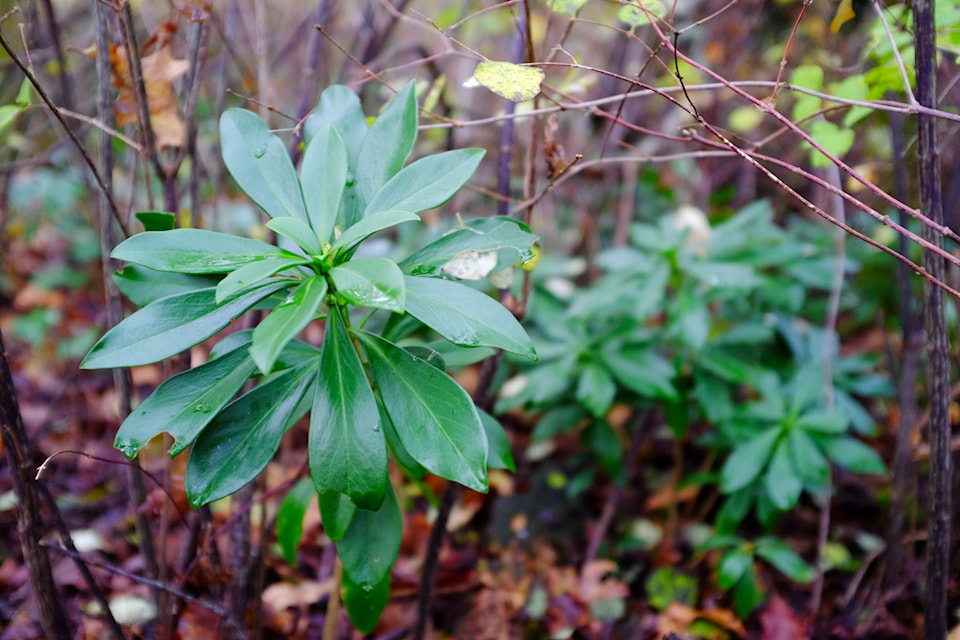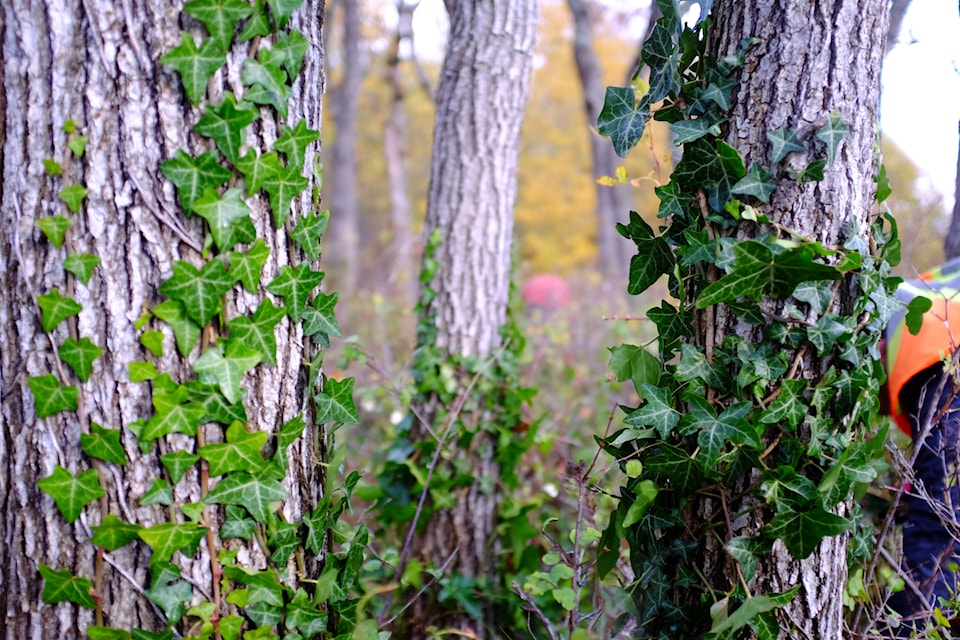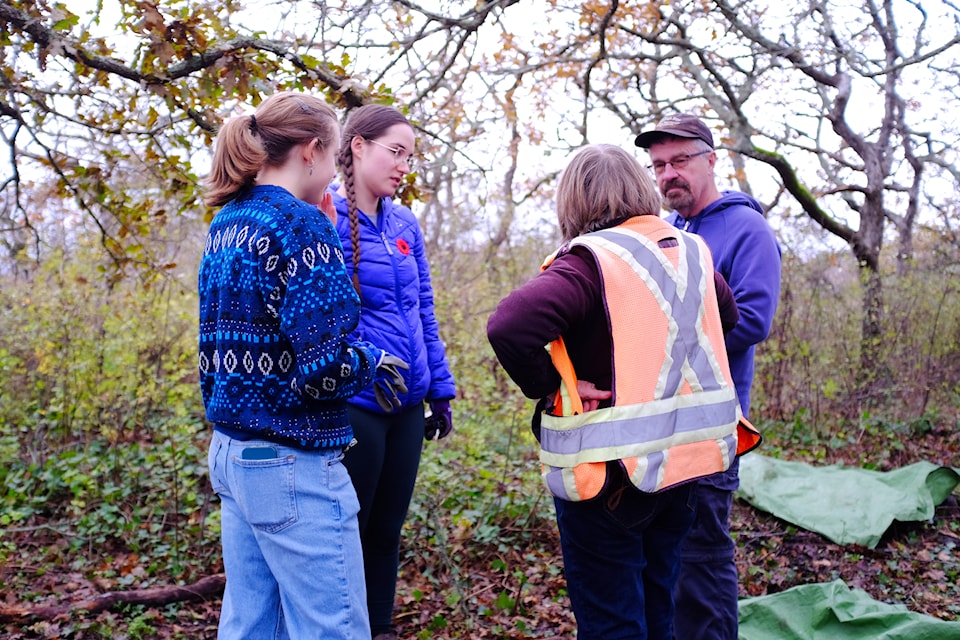Armed with hand shovels, buckets, and patience, a dozen dedicated volunteers gathered beneath the Garry oak canopy at Cattle Point to tackle an invasive threat endangering these trees.
Every week, Margaret Lidkea, president of the Friends of Upland Park, leads a team of nature enthusiasts along Oak Bay’s coast to remove invasive species crippling the fragile Garry oak ecosystem—one of Canada’s most endangered environments.
On the early afternoon of Nov. 10, Lidkea could be found kneeling on the ground tearing away plants just north of Scenic Drive.
She explained that plants from other countries have the potential become invasive when introduced to a new environment. Whether intentionally or by accident, foreign plants can cause significant harm to areas where they are not native.
“Sometimes the seeds were brought in on purpose like grass seeds to grow grain for the cattle,” said Lidkea. “Sometimes, they were involuntarily introduced as people move all through the world, accidentally carrying seeds with them.”
Among those species is the daphne laureola, perennial evergreen shrub native to Eurasia and northern Africa
“This plant is poisonous and can cause rashes,” she said. “Its small little blackberries are not poisonous to rats and they are probably the main animal that comes along and eats the berries."
As the sole consumers of these fruits, Lidkea noted that rodents are the primary spreaders of the seeds, which explains why the plant now grows throughout Greater Victoria.
Covering the forest floor, daphnes cast shade over native flowers, shrubs, and other species, preventing them from blooming. This, in turn, deprives animals, like birds, of their food sources, including insects, seeds, and berries.

However, the daphne's destruction doesn’t end there as it forms a deadly symbiotic relationship with another equally harmful plant: the English ivy.
Lidkea explained that the daphne, killing everything beneath its shade, creates the perfect, unobstructed path for the ivy to reach surrounding Garry oaks. Once this fast-growing, aggressive plant takes hold of a tree, few stand a chance at surviving the ivy’s deadly grip.
“The ivy basically forms a coil around the tree and that becomes hard,” she said. “When the tree grows out, that rigid coil holds the bark in. Underneath the bark, you have tubes that carry water up to the top of the tree. [The ivy can] impede the movement of water by squeezing it and then the tree dies.”

Lidkea also mentioned that scientists believe the ivy may release a chemical into the soil, inhibiting the growth of native bushes and other plants as a strategy to maintain dominance.
For the past 30 years, the Oak Bay resident has been working to clean municipality’s Garry oak forests, starting independently with her Girl Guide group. After establishing annual public clean-ups, and noticing a growing interest from the community, she transitioned to hosting weekly events when she founded the Friends of Upland Park in 2010.
Since its inception, these clean-ups have removed countless tons of invasive species, helping to save numerous Garry oaks and protect fragile ecosystems.
Among the dozen volunteers gathered at Cattle Point this past Sunday was Rebecca Simmons, who joined the group during the COVID-19 pandemic. Since then, she has made this “extreme weeding” session a part of her weekly routine.
“It's an excellent excuse for being outside, with like-minded people,” said Simmons. “It’s a great way to interact with people on a very gentle level without getting too close. It’s a little exercise with fresh-air interactions.”
However, despite drawing a consistent flow of volunteers, Lidkea invites everyone to join her and the team as the area they cover is significant.
“You don't have to stay the whole two hours and you don't have to come every week to help,” said Lidkea. “It's an opportunity for people to come in and get connected to the land, feel the power of the trees, and feel relaxed.”
Lidkea also mentioned it would be a perfect family-friendly event to get everyone outside for a couple of hours and raise the next generation of guardians of this precarious environment.
"[Children] are part of the ecosystem, and if they feel they belong, they learn to have fun in the area, grow to love it, and they will become the stewards of tomorrow."
An area like this of Cattle Point, without such efforts from Lidkea’s troop, could have been overtaken by invasive species long ago and decimated. In addition to protecting a local plot of land, these volunteers have preserved Oak Bay’s broader ecosystem and its surroundings.
Scientists highlight the critical role of pollinators, noting they thrive in native plant areas where they evolved, said Lidkea. In turn, these insects help pollinate neighbouring gardens and agricultural regions, supporting food security, while maintaining local green spaces important for the tourism industry.
“Tourism is one of our biggest industries and people come to our area to see our wild, natural areas and garden,” said Lidkea.
For more information about the Friends of Upland Park or to join their next clean-up, visit



